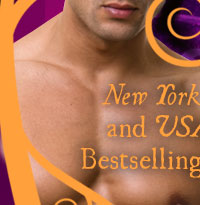See posting just beneath this to learn who won the latest contest
and what’s up for grabs with the brand new contest! ~DD
Branding and Sub-genres in the Romance World
I’m fairly new to this writing business, and I’ve been treating the entire thing as a game. But it’s a game that I take seriously, and one that I’d like to win. My playfulness has made me eager to experiment with different genres and sub-genres, but my desire for victory has kept me conscious of the importance of developing an author ‘brand’. The two approaches initially seemed like they were in conflict with each other, but I’ve lately been thinking (and hoping) that maybe they aren’t.
In writing terms, ‘branding’ means that a reader should know what to expect from an author. We are taught to develop name recognition by giving the reader a recognizable product in each book. Superstars like Stephen King or JK Rowling may try branching out from their original genre, but for most authors, it’s expected that we will be more consistent.
For romance writers, it’s often not considered enough that we limit ourselves to romance; we’re frequently expected to stick to a specific sub-genre as well. When I feel like a good contemporary with interesting characters and a touch of humour, I look for Dani Alexander; if I want something a bit more dramatic, maybe I look for Sue Brown. Fantasy romance? Emily Veinglory. M/M Mystery? Rick Reed. Most of these authors write other sub-genres as well (except for Dani, who needs to stop making silly covers and WRITE FASTER), but they’re considered to have a specialty. And beginning authors are encouraged to develop their own specialties so readers can start to develop ‘brand loyalty.’
I started out strong on that front. Contemporary m/m, or m/m/m. Often with horses. Often set in Canada. I don’t want to toot my own horn, but if you’re looking for a contemporary m/m romance set on a Canadian horse farm – I’m your girl!
But then something happened. I wrote m/f. Shining Armor has my favorite strong, handsome, and vaguely confused male character, but this time, he’s falling in love with a woman! And there’s another anomaly coming out this fall when Carina publishes Shadow Valley. Joe Cody would have been HOT as a gay guy, but, no, he had to be straight. And he’s pretty hot that way, too.
And then I wrote science fiction! The Shift is “Gay Alternate Worlds” according to Samhain. I say, it’s SUPER HEROES! Yippeeeee! Fun! Don’t even get me started on the YA novel that’s coming out under a different pen name. Writing… once you start, it’s hard to stop!
So, I’m destroying my brand, and I don’t seem to care. I’m hoping readers won’t, either. So far, I’ve gotten an encouraging review for The Shift that acknowledged that it was a departure but said, “I think it is awesome when an author tries new plots and new characters instead of repeating the same thing in every book.” (Reviews by Jesse Wave) I’m hoping that most readers feel this way. I’m pretty sure that I do. If Emily Veinglory can make me believe in the romance of a fantasy setting and I see her name on a historical, I think I’m going to trust her to make me believe in the romance there, too.
Hopefully, people will take a chance on me, too. I like to think that I’m creating a brand, but it’s not tightly linked to sub-genre. Instead, I hope that my writing will appeal to people who want realistic characters – sometimes self-absorbed, self-pitying, or otherwise annoying, but realistic. I hope that my writing always has drama, and always has humour. And whether they’re part of the central romance or not, I absolutely insist that my stories always have strong female characters who would be absolutely capable of carrying their own stories, if they so chose!
How do you guys feel? Do your favorite authors mix it up, or stick to one sub-genre? Would you follow them if they branched out? What is it that makes you keep coming back for more?
Kate Sherwood
www.katesherwoodbooks.com
https://kate-sherwood.dreamwidth.org/


















